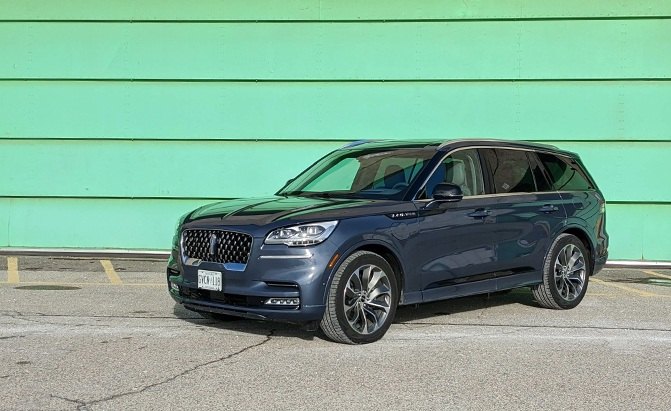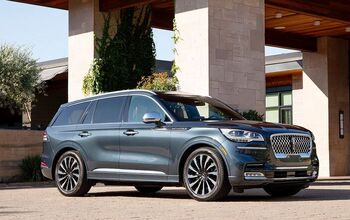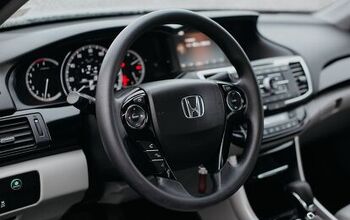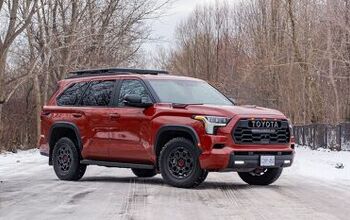2021 Lincoln Aviator Grand Touring Review: Mixed Signals

FAST FACTS
| Engine: | 3.0L V6 Plug-in Hybrid |
| Output: | 494 hp, 630 lb-ft |
| Transmission: | 10AT, AWD |
| US fuel economy (Combined MPG/MPGe): | 23/56 |
| CAN fuel economy (Combined L/100KM/Le/100KM): | 10.3 / 4.2 |
| Starting Price (USD): | $52,840(inc. dest.) |
| As-Tested Price (USD): | $85,140 (est, inc. dest.) |
| Starting Price (CAD): | $71,750 (inc. dest.) |
| As-Tested Price (CAD): | $97,100 (inc. dest.) |
A large luxury SUV with almost 500 hp and enough torque to move the moon, what’s not to like? Right?
Ever left a movie theater feeling a bit puzzled and filled with more questions than when you had entered? It mostly happens when a movie tries to be multiple things at once. A comedy movie with a social message doesn’t always work and not every fantasy adventure is the Lord of the Rings. Some are just plain head-scratchers that leave you wondering what the message was for days. My week with the 2021 Lincoln Aviator Grand Touring was going along similar lines.
Get a Quote on a New Lincoln AviatorBut would there be a definite answer at the end of it or would I be left scratching my head trying to figure out the message?
Very road presence, much wow
You can’t help but notice the Range Rover-esque profile. An imposing stance and an intimidating road-presence are at the core of Aviator’s design. Unfortunately though, as imposing as it is, good looking it is not. From any other angle other than profile, it looks a little too butch and the front is a tad too ornate. While it might not be to my particular taste with its chrome grille and shiny 21-inch shoes, I can see the appeal.
SEE ALSO: 2020 BMW X5 M Competition Review: Check Out These GunsIt was also particularly hard to get it to look good in images. While all the elements—especially on the face—look good individually, they never come together. The rear however, is more interesting than the front. A set of twin pipes on either end and the single LED bar running the width of the tail lends considerable character to the back-end of the Aviator. The giant doors feel like the gateway to a cathedral and much like the pews inside, the cabin isn’t as spacious as you would think.
Them threads
I wish I could use the word “opulent” but since the Grand Touring is based on the lower Reserve trim rather than the truly opulent Black Label, the premium adjective is the best you get. It’s not like it’s missing anything. There are swaths of leather and wood all around the elegant cabin, and the massive moonroof adds to the sense of airiness in the rear. The “Perfect Position” seats are 30-way adjustable with settings even for the two sides of the seat squab. These $3,300 optional extras come with heating, ventilation, and massage function because of course they do.
While the 30-way adjustment seems very useful, it is more of a bragging right. You really need to experiment with the settings to get the right position, and the lumbar is especially tricky to get right from the seat controls. You can, however, choose to adjust your settings from the SYNC system, but do ensure you store them in the memory as finding the right position is quite a process.
Unlike other perches in luxury cars, you get massage on the squab as well as the seatbacks, but they also only massage the lower half of the back which feels rather incomplete. A high-set center console, the large steering, and the SYNC3 infotainment screen occupy most of the visual space making the cabin look compact. The free-standing infotainment screen looks more of an afterthought and the piano-key shifter takes time getting used to.
It’s not until you step into the back does the Aviator comes together. With a comfortable set of heated and ventilated captain chairs and a massive sunroof, the Aviator finally feels like a comfortable and plush place to be in. Rear passengers also get their own climate control zone as well. The third row is best reserved for kids only which is strange since the Explorer–the car the Lincoln is based on—has a rather sizable third row. But by far the most bothersome feature of the Aviator are the door handles, or rather the lack of them. Buttons on each door armrest operate the door but the placement of the buttons is at an odd angle and not ergonomically sound. Plus, what’s wrong with a door handle?
The geeky stuff
Our tester came equipped with the 302A package which bundles in all the bells and whistles. The Perfect Position seats are also a part of this $14,250 ($12,200 CAD) package among a slew of other features like rear heated and ventilated seats, and quad-zone climate control with a separate zone for the third row. A 110V AC power outlet is also a part of the package as is the 28-speaker Revel Ultima 3D sound system. Impeccable would be an understatement for the quality of sound the Ultima system produces. Combined with the vehicle chimes composed by the Detroit Symphony Orchestra, they are the most defining and truly special features on the Aviator package.
I wish I could say the same for the infotainment system. The Aviator uses the SYNC3 touchscreen interface which is also available elsewhere on the Ford lineup. Though available with voice recognition and navigation it rarely ever works as desired. You really need to spell your commands out and even then the system tends to falter. Plus, the voice command button is right at the “ten” position on the steering wheel, right where you’d place the left thumb. Simply put, it just doesn’t feel or look special enough for the cabin.
SEE ALSO: 2021 Cadillac Escalade Review: Ghost ProtocolUsing screen projection is the ideal course of action but even then, the system routinely glitches with Android Auto and only rectifies after the vehicle restarts. Lastly, the rear auto braking intervenes throws up false positives, mistaking shadows for objects, especially on bright Canadian days. Though harmless, the experience sure is unnerving.
So much powaaaaa
Despite its 5,673 lb (2,573 kg) heft, the Aviator really moves. The 3.0-liter V6 makes 415 lb-ft of torque on its own but combined with the 75 kW motor, the number jumps to 630 lb-ft. That’s supercar territory. Off the line and at the lights, it worries drivers in more deft vehicles. The acceleration is head-slapping and out on the highway, it makes short work of sudden overtakes. The 10-speed gearbox, though geared towards fuel efficiency, is fast enough to keep you engaged on your self-indulgent acceleration runs. There is, however, a caveat and a big one.
To extract the whole 630 lb-ft, you need to have a considerable amount of juice in the relatively small 13.6 kWh battery pack. And given the car’s heft, it drains through its battery rather quickly. Lincoln states a range of 21 miles (34 km) but realistically, it translates to about 15 miles (25 km) under daily driving conditions. Sprightly driving (or lower temperatures) will drain the battery even faster.
You can theoretically use regenerative braking to charge the battery but the rate is too slow to make any real impact. Also, it takes the SAE Level 2 plug only and has no fast charging capabilities. Charging from a 240V charger takes about four hours for a full charge while a household 110V wall outlet will need about 12 hours to fully charge the battery from zero. And if you park on the driveway, the 20-foot charging cable will prove to be too short and you will need an extension cord.
Over the bumps and bendy bits
On an SUV such as this, an adaptive air suspension is a necessity and I’m glad to say it works rather well. The heavy battery pack placed in the center of the vehicle also helps lower the center of gravity and lets the suspension perform its job around corners. Although you feel you sit on the car rather than in it, the Aviator, despite its considerable heft, tackles corners better than a car this size should. Though you feel the shift in mass, the suspension does a good job of keeping the massive corners of the vehicle in check.
Bump absorption, both in the city and out on the highway is more than satisfactory. There is no judder or shake from the chassis as the Aviator glides over undulations with minimal fuss. The steering is rather vague and lacks in feedback though, as do the brakes, but that is to be expected from a hybrid. But what is not expected is the lower NVH levels on an $85,000 car. Out on the highway, the cabin of the Aviator can get quite noisy over 55 mph especially around the A-pillar.
Verdict: 2021 Lincoln Aviator Plug-In Hybrid Review
Starting at $52,840 for the Standard model the Aviator is not cheap. (Reserve is the starting trim in Canada, priced from $71,750 CAD.) The Grand Touring starts from $70,810 ($83,750 CAD) and the one you see here is with the 302A package and retails for $85,140 ($97,100 CAD). Despite its premium interior and state of the art sound system and custom composed vehicle chimes, it leaves you feeling underwhelmed.
Yes, it offers insane levels of performance on paper. But there are plenty of conditions you need to fulfill before you can go blasting off towards the horizon. In addition, it is based on the Reserve trim, so it’s not like you’re getting the full luxury treatment either. It comes across as more of a statement that large luxury SUVs can be hybrids and hence environmentally friendly. But if that is the statement Lincoln wants to make why not make it with the Black Label because the Grand Touring tends to fall short on its luxury and electric aspirations. A head-scratcher indeed.
LOVE IT
- Oodles of road presence
- Pretty fast for a large SUV
- Impeccable and special sound system
LEAVE IT
- Restricting cabin despite the size
- Noisy on the highway
- SYNC system

More by Kshitij Sharma









































Comments
Join the conversation